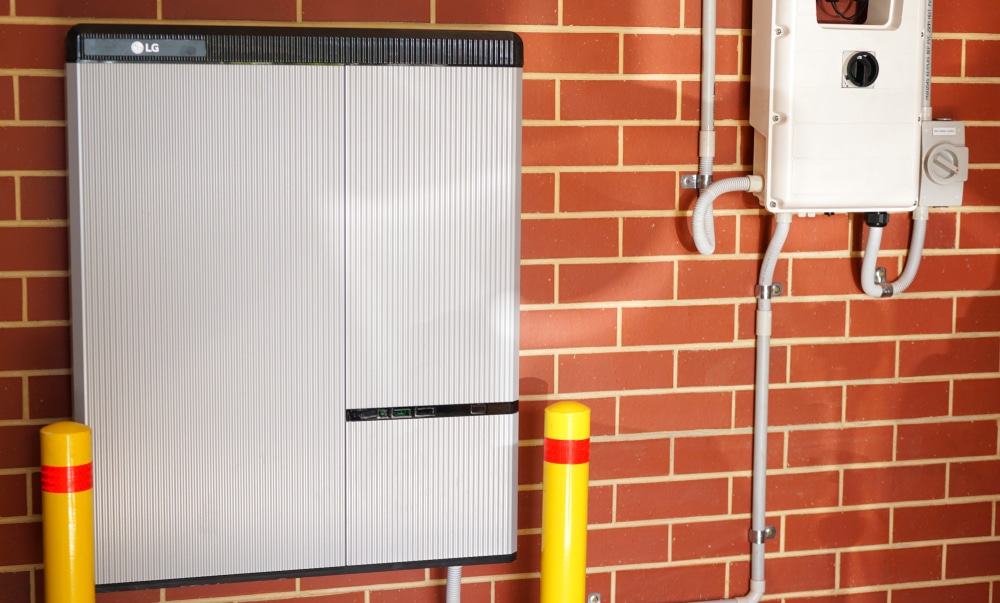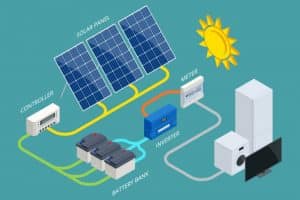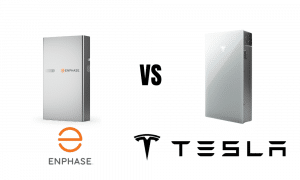Abundant sunlight and an emphasis on renewable energy make Australia a hotspot for solar power adoption. One in three homes across the nation have rooftop solar panels, harnessing the sun’s energy to power homes and reduce electricity bills.
As the world shifts toward a greener future, another technology has begun to capture many Aussies: solar batteries. These energy storage systems promise to revolutionise how we use solar energy, allowing households to store excess power for use during the night or during grid outages.
But there’s one lingering question on the minds of many: When will solar batteries become affordable in Australia?
Cost trends of solar batteries in Australia
The average price of home solar batteries is between $1,000 to $13,000 per kWh of capacity installed. However, the price varies depending on the brand, size and location.
In the early stages of solar battery technology, the cost was undeniably high. They were primarily the domain of early adopters and those with a solid commitment to reducing their carbon footprint. These early systems were expensive to purchase and install, which limited their accessibility to many homeowners and businesses.
The good news is that the landscape has changed significantly in recent years with the cost of solar batteries steadily decreasing. Advances in battery technology have led to higher energy density, longer lifespan, and improved efficiency that help make solar batteries more cost-effective.
The demand for solar batteries also continues to grow, hence more manufacturers and suppliers have entered the market. As a result, it increased the competition that drives down prices, which makes solar batteries more affordable for consumers.
A solar panel owner can benefit more from solar battery ownership as the net benefit has increased from 0.15-0.20 $kWh in 2020 to an average of 0.24 $kWh in 2021. The trend is expected to continue as solar feed-in tariffs (FiTs) and export charges are introduced.
Insights on when prices will drop
Sunwiz has released its annual Australian Battery Market Report, which showed significant growth in residential battery energy storage systems (BESS). In 2021, Australia added 47,1000 installations, which brings the country’s cumulative total to 180,000 ESSEs since 2015.
Nearly all Australian states are added to this number except for South Australia (SA), which has approximately 7 per cent of the nation’s total 26 million residents as of September 2022.
This accounts for a surge in renewable energy that is causing a considerable drop in average prices with $83 per megawatt hours (MWh) in the first three months of 2023, according to Australia’s National Electricity Market (NEM).
This makes Australia one of the most attractive markets in the world for BESS technology, which paves the path for diverse revenue streams that drive the viability of BESS.
To gain better insights into when the prices of solar batteries will drop in the country, there are various factors to consider that influence the cost of solar batteries.
Advancements in technology
Manufacturers of solar batteries are continually researching and developing new materials and designs to boost the efficiency and lifespan of energy storage. As advancements in technology become more widespread, the cost of producing solar batteries is expected to decrease.
Manufacturing scale
As the demand for solar batteries increases in the country and globally, manufacturers can produce batteries in larger quantities, leading to lower production costs per unit. This is one of the trends that are already evident as more companies enter the market and expand their production capabilities.
Market competition
With the growing interest in solar batteries, it attracts numerous players to the industry, which leads to intense competition. To gain a competitive edge, manufacturers and suppliers are under pressure to offer more cost-effective solutions.
Government policies and incentives
A lot of states and territories offer financial incentives, rebates, and FiTs to encourage the adoption of renewable energy technologies. As these policies persist and evolve, they can significantly reduce the upfront costs of installing solar batteries.
Energy storage research
Research institutions and universities in Australia, and across the world, actively study energy storage technologies. Their findings can lead to breakthroughs that make solar batteries more cost-effective.
Consumer demand
As more Aussies recognise the benefits of solar batteries, demand is likely to increase further. Higher demand can stimulate innovation, drive competition, and lead to cost reductions as manufacturers strive to meet the needs of the market.
Whilst the cost of solar batteries has been steadily increasing in recent years, predicting an exact timeline for when they will become highly affordable is challenging. However, the consensus among experts is that prices will continue to drop over the coming years, making solar batteries increasingly accessible to a broader range of consumers.
Therefore, individuals who want to pursue solar batteries should keep a close eye on market developments, government incentives, and technological advancements.
Emerging technologies in the field of solar batteries
One of the emerging technologies today in energy storage is the use of machine learning and artificial intelligence. These technologies can improve the performance of solar batteries by optimising, managing, and forecasting.
Hybrid energy storage systems are also emerging. This type of system mixes various technologies, such as thermal storage and batteries.
The potential for off-grid solar systems to revolutionise the affordability of solar batteries
Off-grid solar systems deliver an independent and self-sustaining source of electricity for homes. They consist of solar panels, batteries and inverters that allow homeowners to generate and store energy without relying on the grid. This autonomy from the grid is a game-changer for affordability.
Excess energy is stored in batteries for later use with off-grid systems that maximise self-consumption, ensuring that homeowners use as much of the energy generated by their solar panels as possible.
In many parts of the country, solar panels owners benefit from FiTs. However, they are typically lower than retail electricity rates. With off-grid systems, will let residents reduce their reliance on FiTs by using stored energy during peak demand times when grid electricity is most expensive.
Off-grid systems also prioritise battery storage, and as the demand for solar batteries increases, economies of scale come into play. As more homes adopt off-grid systems, the production of solar batteries is likely to increase, leading to lower costs per unit.
Whilst off-grid systems may need a higher upfront investment compared to grid-tied systems, their long-term affordability benefits are appealing. This revolution in energy indolence offers a promising path for households in Australia to embrace renewable energy and reduce reliance on costly grid electricity.
It’s evident that the future holds great promise for the affordability of solar batteries in Australia. As advancements continue, we can anticipate further drops in costs, enhanced efficiency and increased accessibility for homeowners and businesses alike.
Looking at going solar? Join millions of Australians who have already made the switch to solar. Receive up to 3 FREE, obligation-free solar quotes from trusted local installers – it’ll only take you a few minutes! You can also call us on 1800 EMATTERS or email our friendly team for expert, obligation-free advice.













































